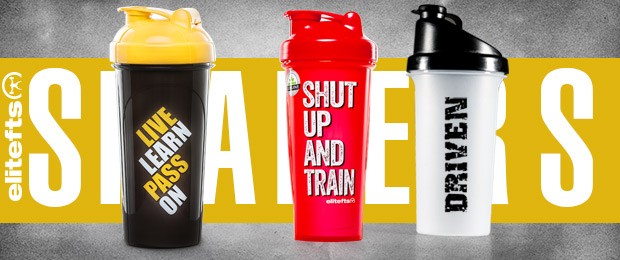
Two years ago, I “retired” from in-person training. 18 months ago, I launched my premium online coaching program, The Anti-Meathead Method, and its supporting blog at alexandermullan.com. Three weeks ago, I came out of retirement and trained my first in-person client in years. As an ice-cold cloth to the face immediately wakes you up, everything I’ve learned about training, nutrition, supplementation, and helping new lifters advance from “rank beginner” to “diehard meathead” came crashing into crisp clarity.
Here’s what I learned from running my first in-person training session in years:
1. Everyone begins on their own level.
Aidan, my client, is a rank beginner to the training world. It’s been six years since he last touched a weight, he possesses little understanding of nutrition basics outside of the “good versus bad” mentality, and he has little to no muscle tissue to work with.
If I were to set him up with a plan that called for six training sessions per week, and a nutrition plan resembling that of a competitive bodybuilder in their off-season, I doubt we’d be working together for long — nor would Aidan find the success (and results) he’s looking for in the gym.

The amount of training volume would leave him incredibly sore and demotivated from being unable to complete sessions. In shifting his menu from eating three meals a day like most people straight to six, I’m confident in saying that there would be missed meals. If muscle growth and overall size is your goal, if you’re starting at the bottom, you need to wean your food intake up over weeks and months, not days.
RECENT: A Contrarian’s Approach to Building Muscle
Being unable to execute the odd training session or missing a meal now and then isn’t the end of the world to someone who has been in this game for some time. For a rank beginner who simply needs to start by building the habits of hitting the gym three to four times per week and getting a solid amount of protein at each meal, the “plan” above would be setting him up for failure right out of the gate.
Whenever you’re trying to adopt something new and ingrain a new habit, take the time to assess what level you are on, understand what you want to achieve, and then build out steps take yourself there.
In my experience, when it comes to building new training and nutrition habits, baby steps (and not overreaching what you’re currently capable of, mentally and physically) is always the wiser, more effective route.
2. Everyone moves differently.
At the end of the day, training is movement. This is largely why, over the past year, I’ve fallen into referring to exercises as “movements” instead of, well, “exercises.” Sure, you’re exercising your muscles, but on a deeper, more accurate level, every exercise you do in the gym is movement.
Some people are better at a given movement, while others are horrible at the same ones. Individual biomechanics, your injury history, the sports and activities you played in your youth, and your current lifestyle will all impact how you move. For example, the client I broke out of retirement for is a commercial fisherman by trade, meaning he spends months at a time on a boat, battling to wrestle massive tuna out of the ocean and onto his boat. Despite being currently devoid of much muscle, spending months at a time on stormy waters has made him much more “comfortable” with movement as a whole than someone who spends 10 hours a day crouched over their desk, furiously typing away (like yours truly).
Your unique biomechanics and personal movement proclivities mean that not every movement is going to be optimal or well-suited for you. Building awareness of how you move, which exercises you excel at, and which exercises challenge you (including why they challenge you) is your key to making long-term, injury-free progress.

3. Your mindset manifests your results.
The following are quotes straight from Aidan’s mouth as we talked about what he wanted to achieve, and our plan for taking him there:
- Form is the main thing I'm going for. Weight is in the back of my mind. I know a lot of people that brag about their squat and deadlift weights but screw that. I want to do it well.
- Gotta be a full commitment on my part, and that's what’s best for me to meet my personal goals.
- Let's turn this 160-pound bag of bones into a fitness machine!
These snippets lay out why I firmly believe that Aidan is going to be successful (and then some) in what he’s setting out to accomplish:
- Aidan recognizes that learning to train properly matters more than rushing to pile more weight on the bar for the sake of a bloated ego.
- Aidan understands that his old way of doing things isn’t going to lead to results he wants, and so he must make changes to his lifestyle.
- Aidan has come to terms with the fact that what he wants to achieve isn’t going to happen overnight, and that there will be periods of ups and downs along the way.
These examples epitomize a growth mindset, and from what I’ve seen in my five years of working with clients, always translates to the most successful transformation and well-ingrained lifestyle changes. Your mindset is directly related to your physical being, and when you control your mind, you’ll control the physical outcomes.
MORE: Why You Should Hire an Online Coach
The Final Reps
To any fellow online coaches reading this, I strongly suggest working with one or two in-person clients alongside your online offerings. Aside from the benefit of social interaction and keeping your sword sharp, training in-person will bring you realizations and aha moments that will bring benefit to your online clients as well.
To any prospective, stuck, or struggling lifters reading this, your first step is to begin internalizing:
- There are different levels of fitness, and knowing which level you are on, then matching your plan to fit that mold will bring you much success in this iron game.
- You are going to move differently than your training partner or the dude at your gym whose physique you wish you had. Learning to adapt movements in the gym to how you move is an easy way to tap into surges of muscle growth and strength increases.
- Control your mind and you control your results.










